Australian Tropical Rainforest Plants - Online edition
Freycinetia marginata Blume
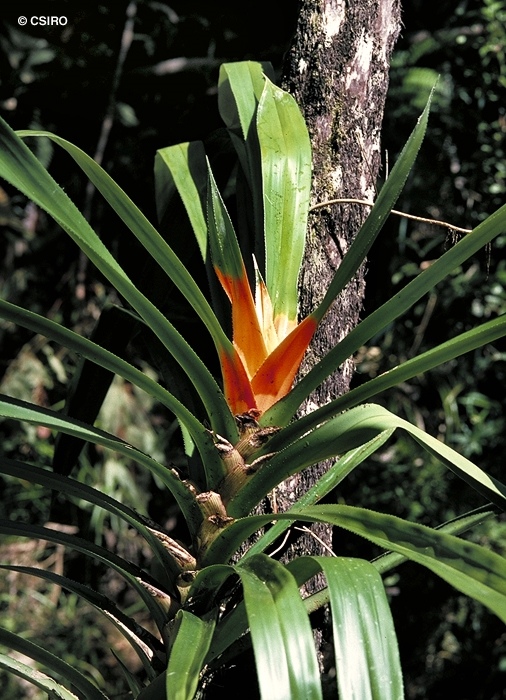
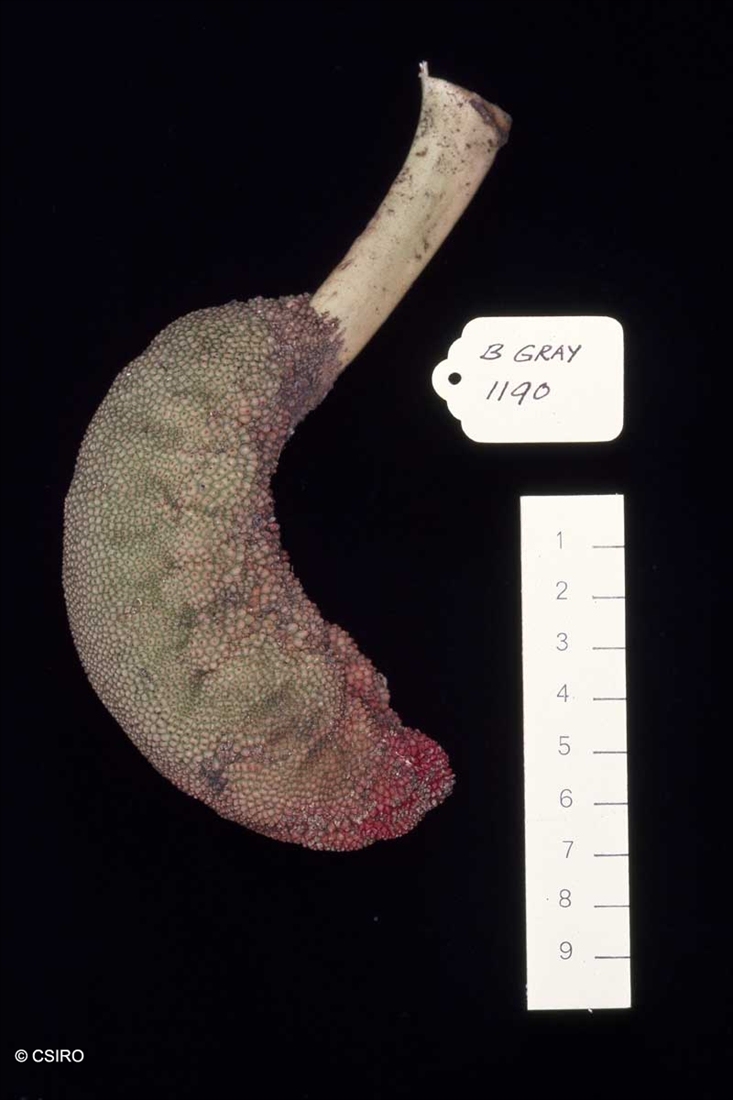



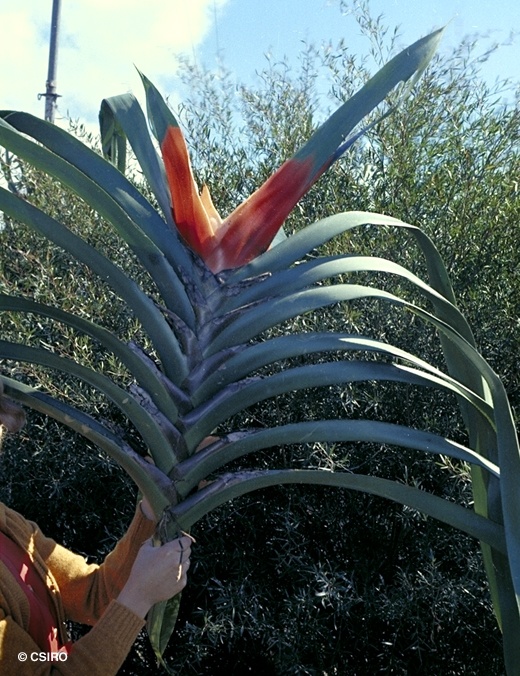

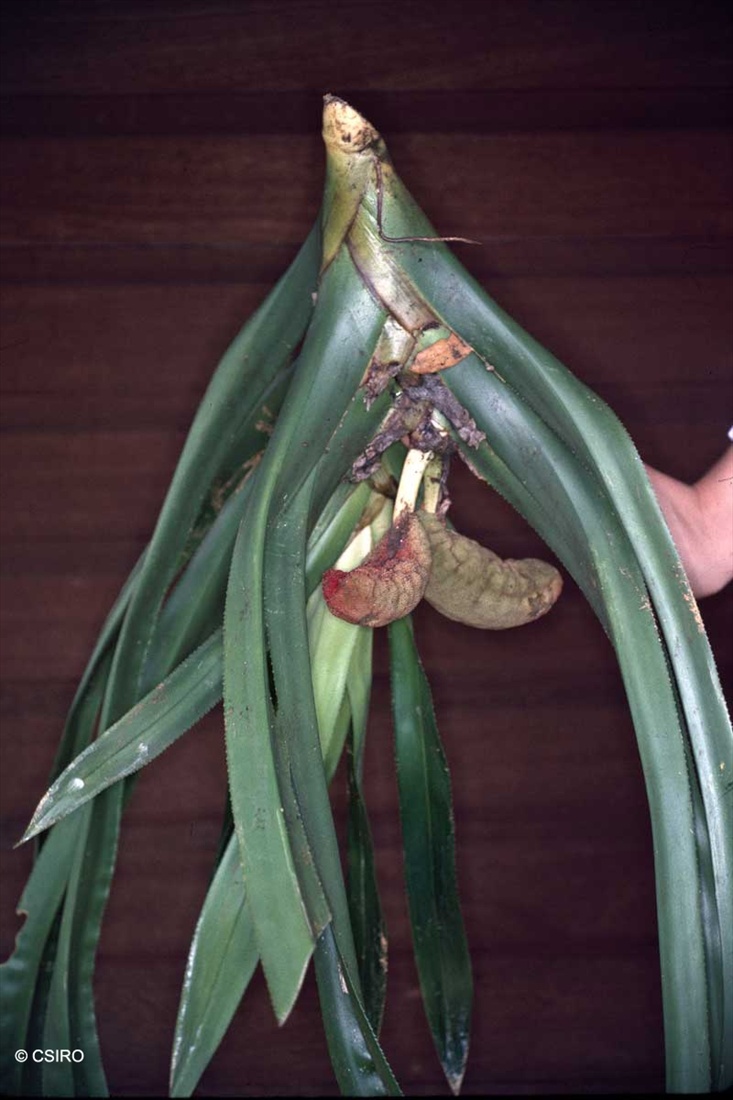
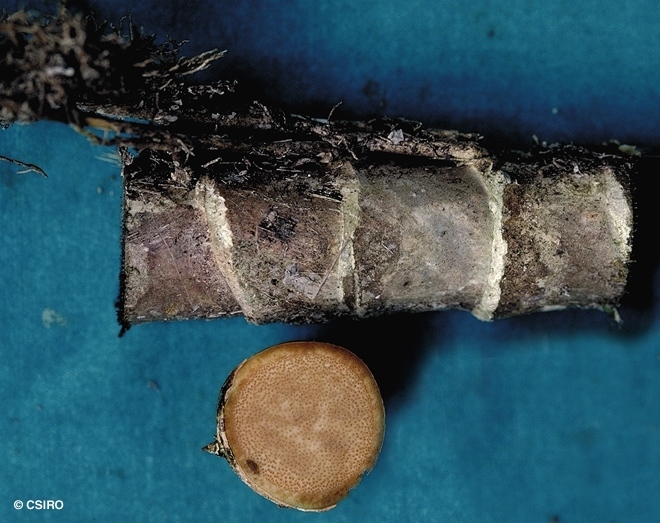

Blume, C.L. von (1835) Rumphia 1 : 158. Type: New Guinea, Zippelius 219-a; holo: L. Fide Stone (1982).
Pandan, Climbing; Climbing Pandan
Vine stem diameters to 3 cm recorded. Stem diameter increases as one proceeds from the base of the plant to the apex. Stem marked by definite, very obvious leaf scars. Numerous adventitious roots present on most parts of the vine stem and hold it quite firmly to the substrate.
Leaf blades about 100-150 x 5-8 cm, base extended to form a translucent ligule which catches debris and water. (Leaf blade not narrowed to form a petiole.) Each ligule about 12-20 x 2.5 cm. Leaf blade margins serrate and spiny from the base to the apex. Midrib armed with spines on the underside of the leaf blade at least on the apical section of the leaf blade. Venation fine and longitudinal. 'Oil dots' irregularly shaped although often orbicular. Although the leaves are spirally arranged on the stems the leaves end up being in 3 ranks.
Male flowers: Inflorescence about 10-15 x 2-2.5 cm, produced in groups of three, subtended by large orange or orange and green bracts. Anthers about 1 x 0.6 mm, numerous, dark red and glandular on the back, filaments white, about 3 mm long. Pollen pale brownish. Female flowers: Inflorescence about 10-13 x 2-3 cm produced in groups of two to four, on peduncles about 4-5 cm long, subtended by orange or orange and green bracts up to 50-70 cm long. Individual flowers (essentially ovaries) tightly packed, about 2-3 x 0.6 mm. Very small appendages (staminodes) usually present at the base of each ovary. Stigmatic surface often divided into two sections.
Infructescence about 18-20 x 6 cm, each on a stalk about 6-7 cm long. Fruits subtended by leaves or bracts which are red at the base. Individual fruits about 17-18 x 1.5-2 mm. Seeds about 1.3 x 0.4-0.5 mm with a paler section or wing along one side. Embryo comet-shaped, about 0.4 mm long.
Features not available.
Probably not in cultivation but would make a spectacular addition to a tropical garden if trained to grow up a tree.





